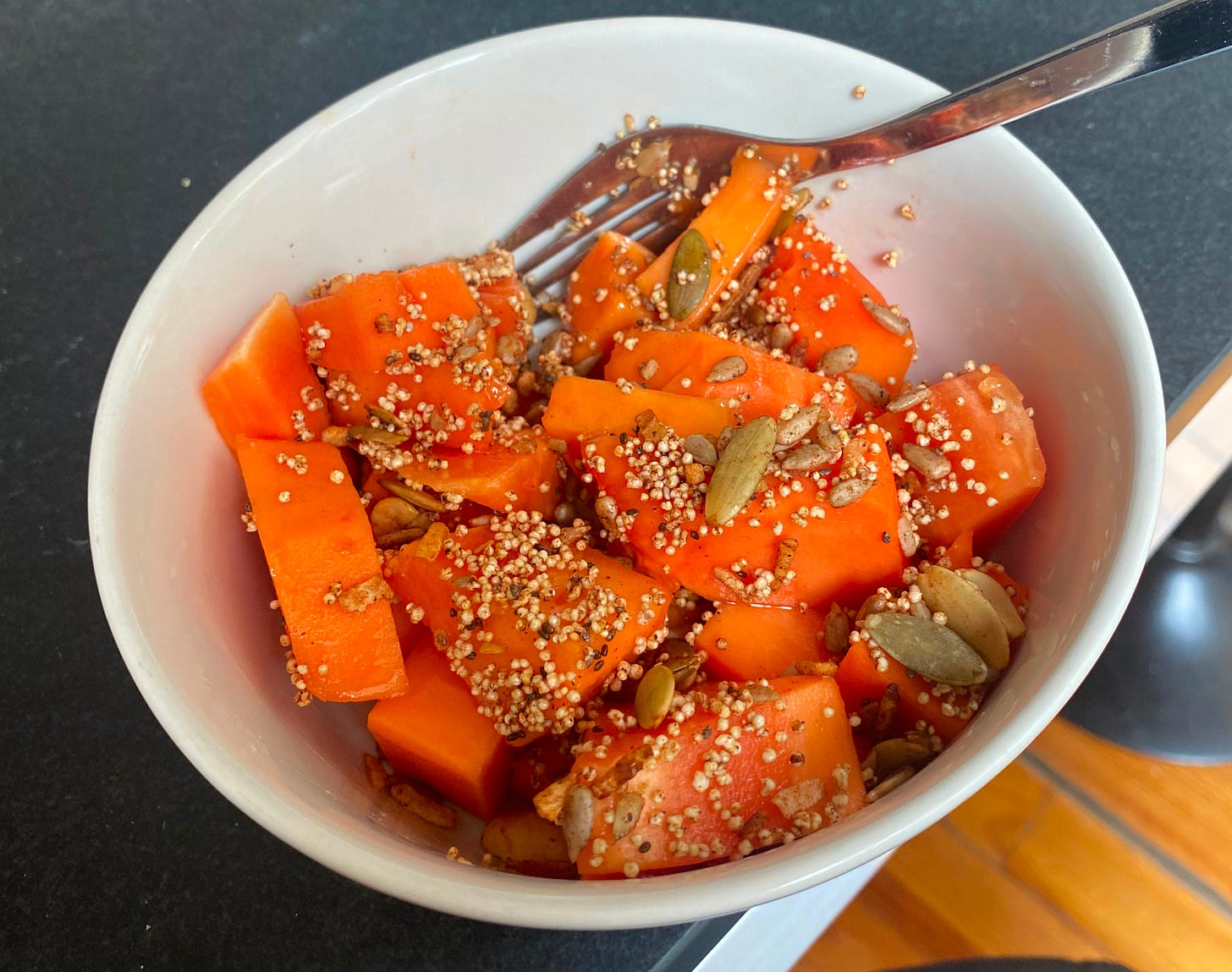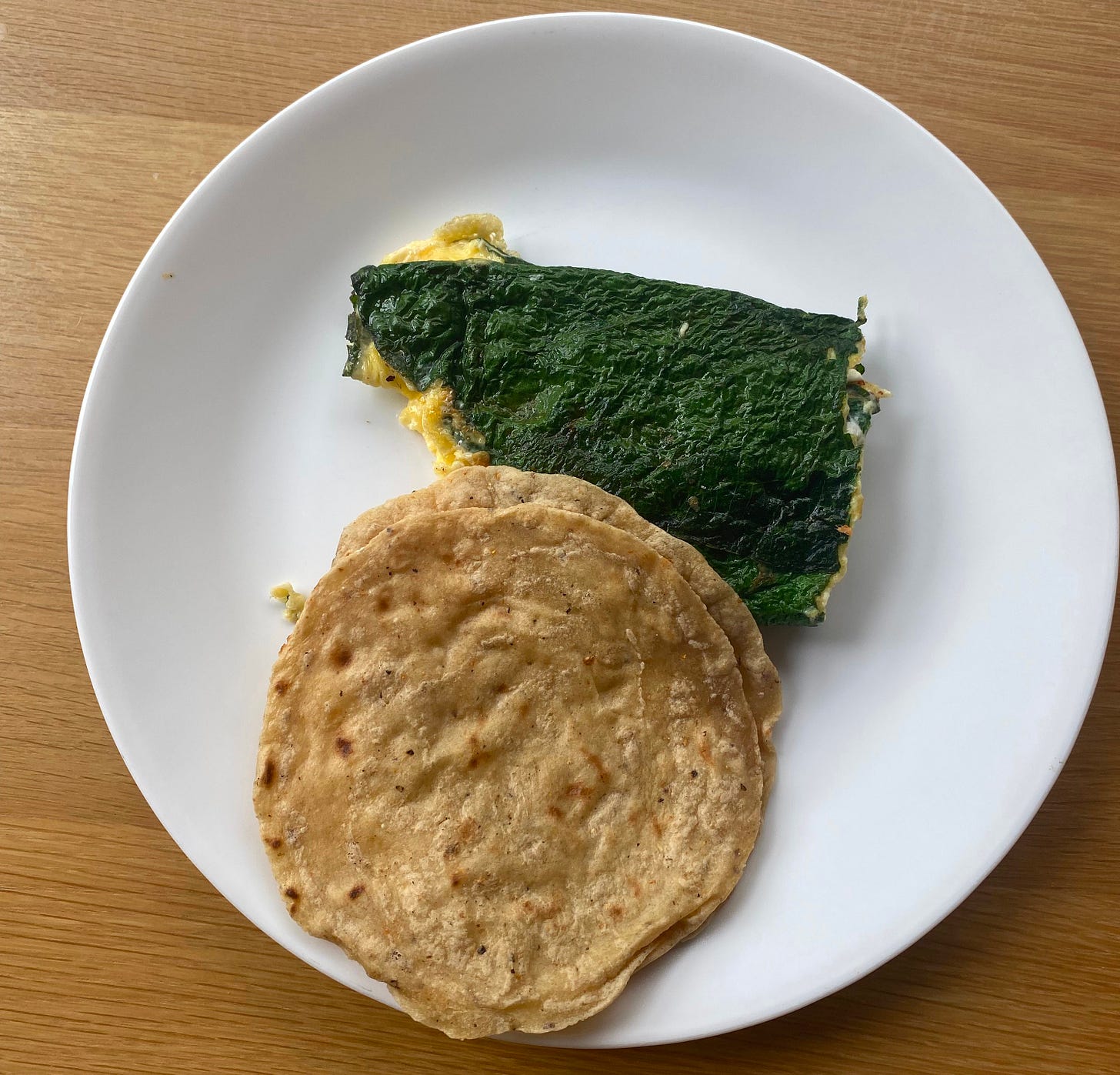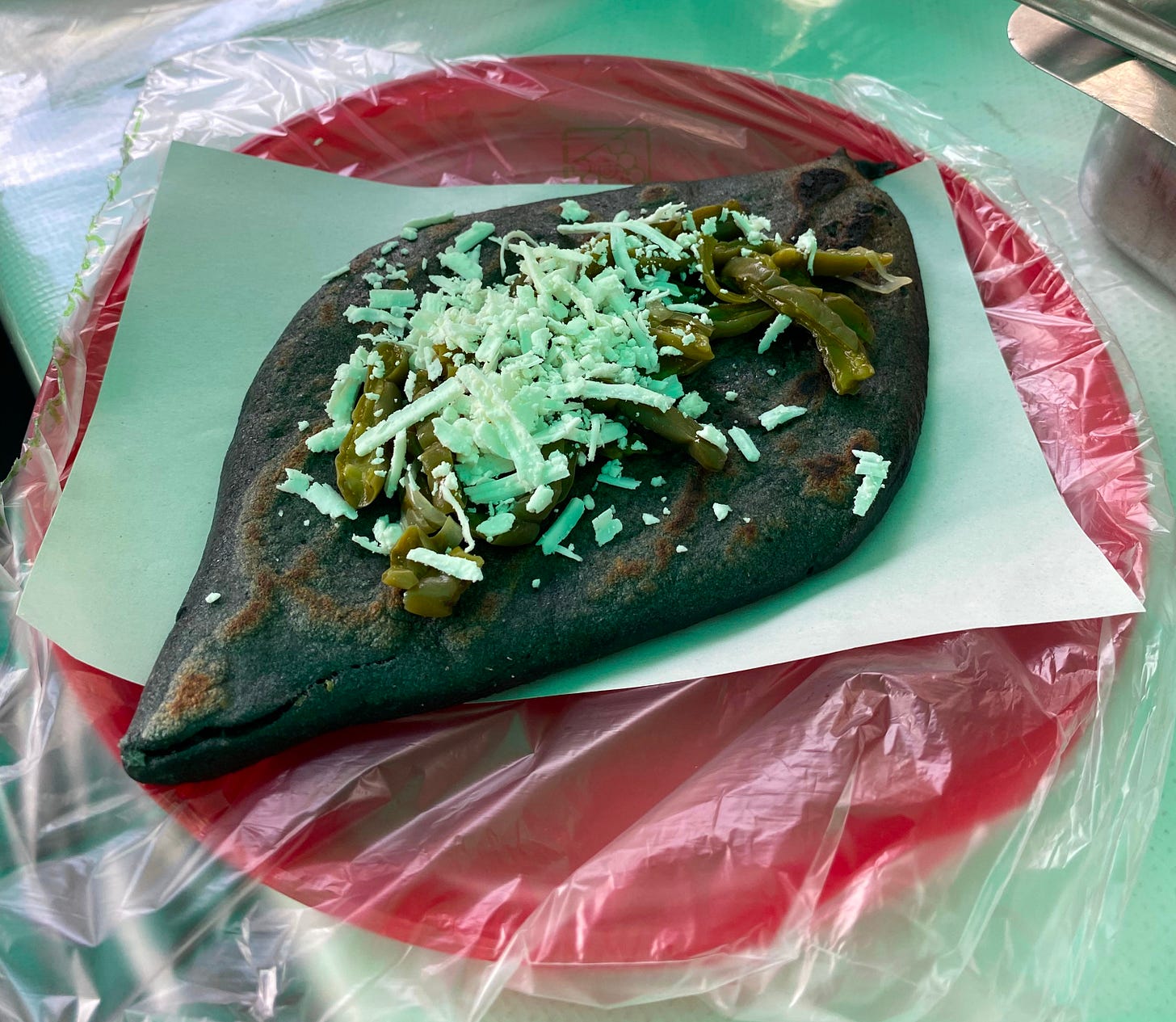This is the second part of a little detour into writing about what I eat. Part one, about cooking more generally, and doing the Grubstreet diary, is over here. This part is was supposed to be about cooking at home in Mexico City, but it ended up mainly being about breakfast.
Papaya
Alone in the Dominican Republic in my early twenties, I had real papaya for the first time. I remember exactly where I was on that hotel patio where no other guests seemed to be staying, and I remember I’d just broken the shell of the soft-boiled egg too forcefully and splattered the yolk all over the table. I can recall the exact shape the papaya had been sliced into, and that I wanted to ask for more, but didn’t want to be rude. Truly, it seemed that that everything I’d ever known about breakfast was wrong. There was no greater thing to eat in the morning than papaya.
Once I was back in New York I tried to recreate this experience and found the papaya available there to be gummy, lifeless, and musty. I quickly gave up; I tried to forget this fruit. But during the first August I spent in Mexico a few years ago, Daniel and I bought a papaya from a guy on the street and sliced it up in the apartment and I went mildly insane. Now that I live here, I require papaya every morning.
Papaya season here is mainly May through September, but I’ve had decent, even excellent, local papayas off season, too, which is… perplexing. While I was briefly visiting friends in Hudson, I had one of those transcendent strawberries that only appear for a few weeks in their peak form. Certainly the scarcity makes the fruit taste better, but I’ve yet to feel bored or accustomed to papaya. Does my devotion to papaya make me attuned to the many nuanced joys of papaya, or does the papaya exert some intensity of flavor and texture that hastens my devotion? This is a central question in all forms of love, I suppose.
Homemade Granola
The morning papaya is eaten with a very seedy, not very sweet, slightly salty granola that I make at home. There is no fixed recipe for this granola, but the general guidelines for it can be found at the end of this post. Once I made it slightly more burned than usual, and my aunt-in-law Alicia insisted that she preferred it this way. “Burn is my favorite flavor,” she said. I’m not sure anyone has ever liked anything I’ve cooked at much as Alicia liked that burned granola.
Second Breakfast
One summer I was an assistant sculpture teacher at The Putney School, where I had to oversee children using welding equipment that I myself barely knew how to use. My class was in the morning, and there was something called “Milk Lunch” that happened around 10am. I felt there was something obscene about this phrase, “Milk Lunch,” and when we heard our students returning from this second breakfast, which consisted of some kind of baked good and, yes, milk, the main sculpture teacher would look at me and say, “They’re back. And there’s full of milk.” I found this simultaneously hilarious and menacing, so I tried not to react at all. Still—a life with a multi-part breakfast is, to me, a perfect one.
An hour or so after papaya, that sacred first breakfast, Daniel and I usually exercise (hand weights, pilates, whatever we can do to combat entropy and las cuartentas), then there we sometimes consume vegan protein power (again, trying to fight entropy here) and then we have the second, but slightly more official “breakfast.” (I guess if you’re counting the protein powder this is the third breakfast, but the protein powder is more medicinal than food.)
Probably the most exciting breakfast here is savory oatmeal. Oatmeal cooked with just salt or maybe miso paste or black pepper or veggie broth or all of the above, topped with blanched green beans, a soft boiled egg, cashew cream (recipe at the end), some kind of pickled vegetable, some kind of toasted seeds and usually something spicy— salsa macha is a favorite.
At least half the time it’s just eggs in one form or another— fried, omelet, a la mexicana, etc— and either sourdough toast from our beloved/genius gluten free baker in town (years ago, my body suddenly began to stage a violent protest against gluten, alas) or tortillas from the insanely talented and kind woman who sells them on a street corner near us on Wednesdays and Saturdays.
A Word About These Tortillas
I used to love the tortillas from the tortillaría machines, tortillas that taste and feel almost always the same (with some crucial, minor differences) no matter which tortillería you visit. But then I discovered this woman’s tortillas and there is no turning back. They’re obviously made by hand and the masa is higher quality, and I’ve had good quality handmade tortillas elsewhere (the tianguis for instance) but they all lack some indescribable thing that her tortillas have. Is it simply the knowledge that I bought them from this very kind woman on the street? Does she have some kind of patented technique or especially good masa hook-up? No idea.
When we, for some reason, miss her Wednesday or Saturday appearances, or when we get there too late and she’s sold out, a great shame falls upon our household for the few days until she returns.
Hoja Santa
The first time I had Hoja Santa was June 2023 in La Pitaya, a small village outside Xalapa where some of my family lives. Again, like that first bite of papaya, I have a microscopically detailed memory of exactly where I was sitting, what I could see out the window, the way I almost cried.
Hoja Santa— the holy leaf, or maybe the saint leaf— grows wild all over La Pitaya and plenty of other places in Mexico. Its flavor is somewhere between basil and a pure ascent to heaven after a lifetime of righteous and loving behavior.
Daniel had foraged a few leaves from the street and cooked them into some scrambled eggs. Here is what it looked like:
I have never recovered from this moment. We buy hoja santa from the same guy at the tianguis that we get garlic and herbs from. He also sells crystals and incense and various other religious things. Sometimes we talk about getting our own hoja santa plant, but I feel I would forage the leaves too often and kill it off.
Sometimes we wrap a piece of fish in hoja santa and bake it inside a foil packet. Meals with hoja santa are invariably the most exciting and delicious ones.
Tianguis, Tlacoyos
Sunday is our neighborhood Tianguis, a street market for fruit, vegetables, plants, dry goods, homewares, and food stands. Almost every Saturday, Daniel and I go get tlacoyos de habas from our favorite vendor as our second breakfast, post exercise if it’s an exercise day. A tlacoyo is a football-shaped disc of masa typically filled with beans or cheese, topped with a little queso panela and nopales, stewed cactus. Here’s an especially huge one I had last weekend, seen before I doused it in all the salsas:
Meals That Are Not Breakfast
Because I work best before about 3pm, I don’t usually linger in the kitchen after making breakfast, but often when I start cooking in the afternoon or evening, I tend to make three or four other things, sometimes at a manic, before-the-end-of-my-shift pace. I think this habit has something to do with how I used to work in the commercial kitchen, but also my mom did and still does this in her own kitchen. She’s probably, as I type this, cooking five things in her kitchen right now.
Recently, I was only going to roast some zucchini and make a tahini sauce to go along with some fish that Daniel was making, but I ended up prepping roasted carrots and potatoes and sweet potatoes for the week, making a batch of cashew cream, blending up tumeric-ginger shots for the freezer (non-recipes for both at the end), and making a pot of cream of celery soup because the celery was there and there were a few extra potatoes and the house just felt like it needed a soup. A 20 minute task became three and half hours of cooking, but then we were all set for the next few days. Sometimes I don’t even realize that this manic multi-tasking has happened again until every dish and pan in the kitchen is in the sink.
Cooking for other people is the other thing I take as seriously as my many breakfasts. Maybe I’ll have to make a third food-focused post about dinner parties, but for now I will leave you with the little notebook we use to keep track of who we cooked for and what we cooked:
I feel like Substack is a good place for food writing that goes beyond recipe-centric content. I’ve been enjoying
a lot, but she’s moving to beehiiv, and the incredible is here now if you didn’t know, but who else is out there? Who is writing things like this, from a post of Alicia’s in May about whether food writing is inherently anti-intellectual:Food is feminized in the home, made masculine in the workplace, but in both cases, it is not broadly thought to be pursued for intellectual reasons. The visceral nature of eating means that it can never be serious in the common imagination, and this might be key to mainstream food media’s anti-intellectualism: too necessary, too everyday.
Let me know who else I should be following?







